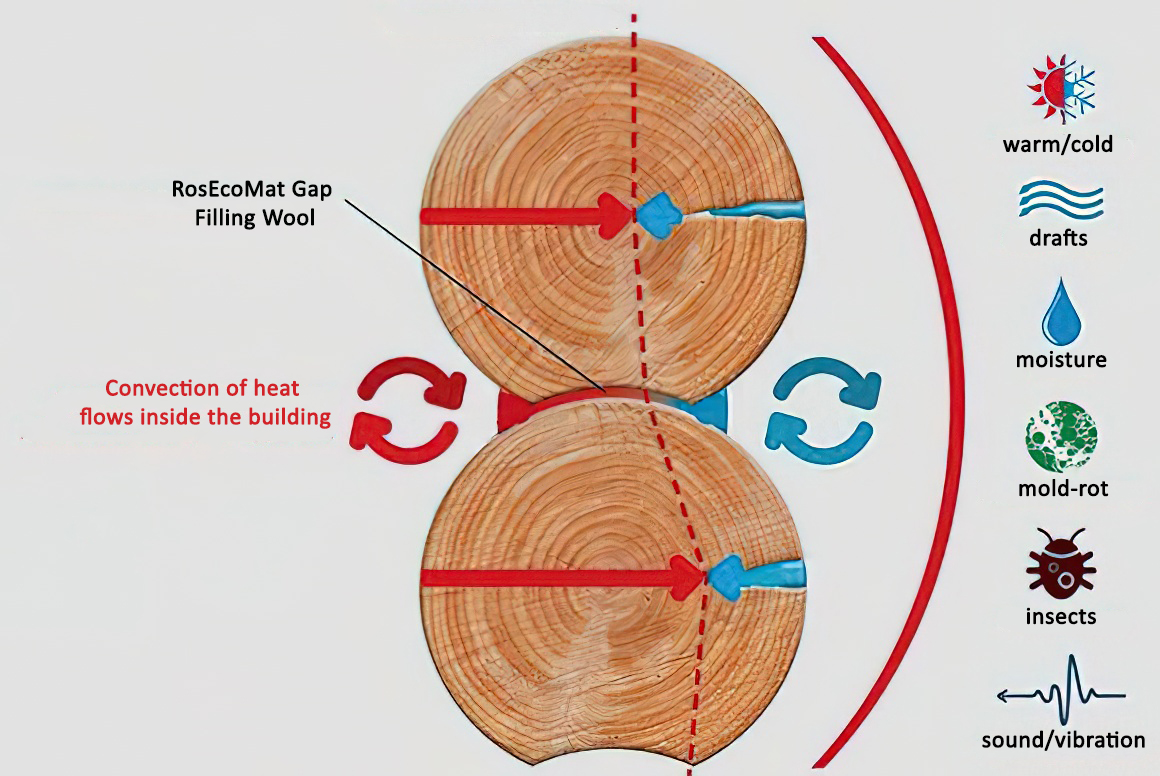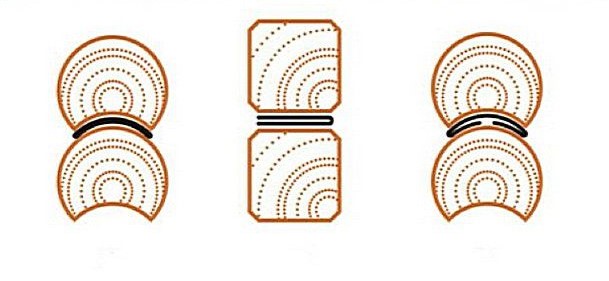Dear clients! Experts with many years of experience will help you find the perfect solution for your needs. We also offer free consultations on the mounting of insulation materials.
14
Oct
Dear clients! Experts with many years of experience will help you find the perfect solution for your needs. We also offer free consultations on the mounting of insulation materials.
Sheep wool insulation for the house «RosEcoMat Woolen Ribbon». Ecological insulation tape is used to insulate the wall, between logs, in a wooden house. For insulation of joints. For sealing and insulation around windows and doors. Durable, reliable, elastic. Easily restores the original thickness without load.
21,01 €
| Quantity | Price | Discount |
|---|---|---|
| 400-1000 | 19,96 € | 5% |
| 1001+ | 18,91 € | 10% |
| Length, mm |
8000 |
|---|---|
| Width, mm |
105 |
| Thickness, mm |
20 |
| Body density, kg/m3 |
350 |
| Thermal conductivity, Wt/mK |
0.033 |
| Moisture absorption coefficient, % |
0.1 |
| Vapor permeability coefficient, mg/(m*ч*Pa) |
0.01 |
| Quantity per package, PCs |
1 |
| Ingredients |
Wool fiber ,Polyester fiber |
| Type of material |
Roll |
| Assignment (base) | |
|---|---|
| Application of thermal insulation | , |
The use of «RosEcoMat Woolen Ribbon» will prolong the service life of a wooden house: the cold does not enter through the joints inside the log (beam) walls, the moisture in the wood is less frozen, and this means a reduction in the number of cracks.

The wool fibers are treated against both smell and insects. Thanks to its elastic and springy structure, the insulator fills the entire space between the logs or beams, thus eliminating cold bridges. During shrinkage of walls or expansion of gaps between logs, the material is able to shrink and straighten — gap filling wool compensates fluctuations in the wood volume. Fibers over time do not sink and do not densify, therefore not losing their original qualities. Sheep’s wool perfectly accumulates moisture (up to 30% of its own weight), as a result, the house with wool insulation will have a perfect microclimate, additional vapor barrier is not necessary.

The width of the rolls is selected according to the size of the log, beam or available on it profile grooves designed specifically for gap filling insulation. If necessary, for a tight fitting of the logs, it is practiced to lay in two or even more layers — depending on the geometry of the beam or log.

The installation is not complicated — the insulation tape is fixed to the wood with stapler staples.
Wool does not burn. Wool requires 25,2% of oxygen to ignite. The atmosphere air contains only about 21% oxygen. The ignition temperature of wool is 580°C. Sheep wool is hypoallergenic.
Gap filling insulation is produced from quality merino wool, the best, which is characterized by a number of remarkable properties
No technical solutions found!
Polyester insulation between logs for wooden walls of the house. «RosEcoMat Polyef Ribbon» is an environmentally friendly and durable insulation, made of 100% polyester fiber. The insulation does not require additional sealing of joints.
Thermal insulation tape «RosEcoMat Linen Tape» is a versatile insulation material, strips of which are used to insulate the walls of a wooden house, windows and doors. It can be used as a material to protect plants from the sun (from soil drying).
Natural seamless insulation from sheep’s wool for frame walls, mansard roofing, attic floors and other building structures. Does not have cold bridges.
Wool rolls are used for thermal insulation of horizontal and inclined structures in the house, such as roofs and floors. The insulation «RosEcoMat Wool» does not support combustion and is self-extinguishing. «RosEcoMat Wool» easy to install. When you use sheep’s wool insulation, you can improve the microclimate, minimize noise, and save heat in your building.
Използваме «cookie», за да подобрим работата ви с нашия уебсайт. Като разглеждате този уебсайт, вие се съгласявате с използването на «cookie».